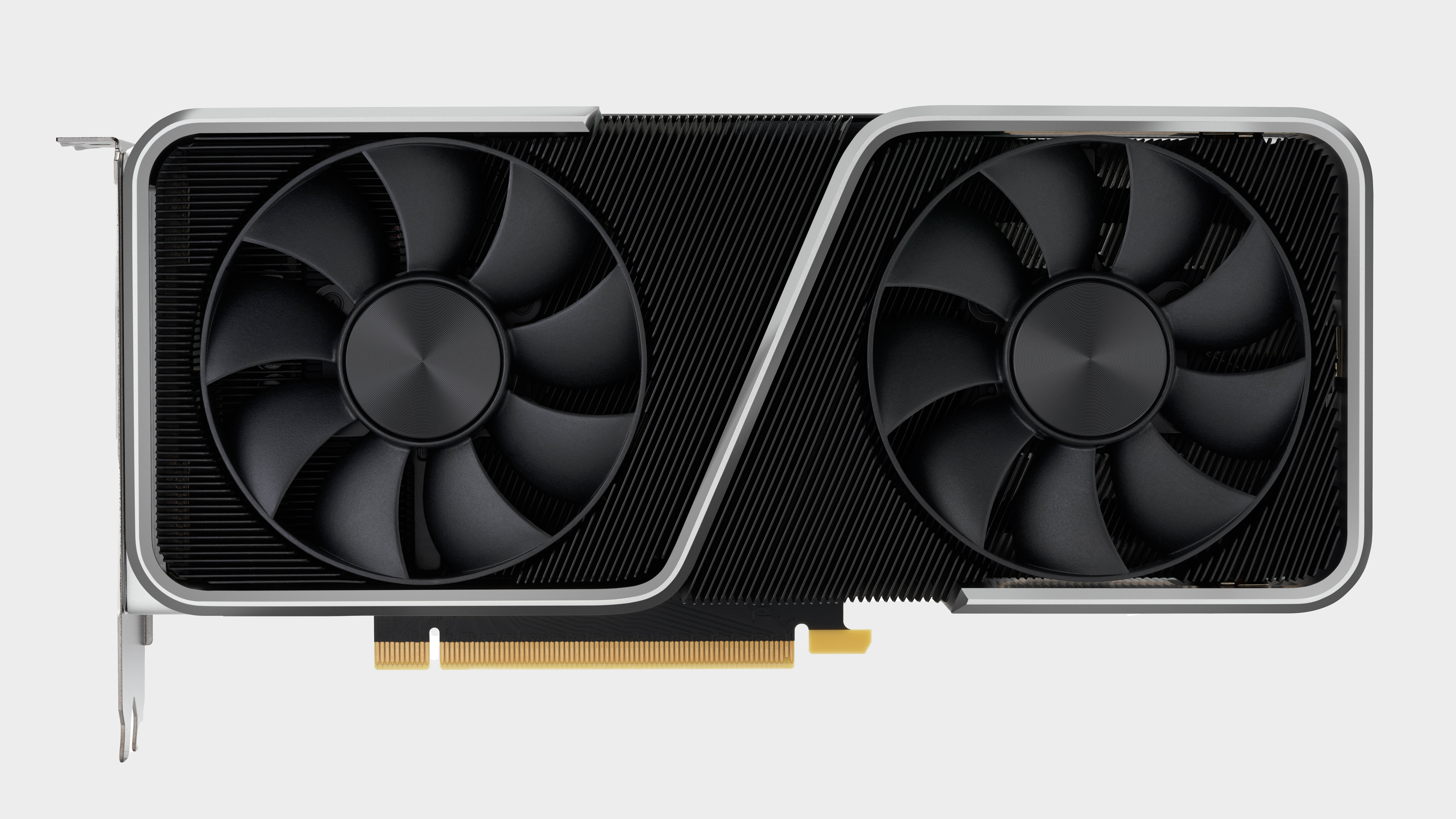Our Verdict
The RTX 3060 Ti is exactly what we expected from a fourth-tier RTX 30-series graphics card, but that's no mark against it. Nvidia's Ampere cards offers an almost unprecedented leap in gaming performance over past generations, and the RTX 3060 Ti manages to deliver more of the same on a slimmer budget.
For
- 4K performance
- Most affordable Ampere
- Decent ray tracing performance
- Great cooler
Against
- Inventory is sure to be tight
- AMD's potential retort
PC Gamer's got your back
The Nvidia RTX 3060 Ti may come as a surprise considering its launch ahead of a standard, non-Ti RTX 3060. Or it would have if word of its arrival hadn't been plastered across the internet for months now. Yet even if it breaks convention, it is nonetheless a welcome addition to the RTX 30-series lineup: as a sub-$400 card, it's a far more affordable Ampere graphics card that its forebears.
The cheapest of the lot up until now has been the Nvidia RTX 3070, and while being a great card for 1440p and 4K gaming it still necessitates a considerable chunk of change by way of its $499 (£469) price tag. The RTX 3060 Ti goes some some way to dropping required pay-grade for Ampere at $399 (£369).
Of course its closest match remains the RTX 3070, and its similarity to the bigger sibling runs deeps. Both use a matching memory loadout—8GB of GDDR6—and make use of the same GPU at their core, namely the GA104, fabricated on Samsung's 8nm process. The RTX 3060 Ti delivers a slightly cut-down payload of 4,864 CUDA Cores divided across 38 SMs, compared to the 5,888 cores and 46 SMs within the RTX 3070—a 17% reduction in graphics-chomping silicon.
That also makes for fewer RT Cores and Tensor Cores, although as you'll see in our benchmarking that doesn't make the RTX 3060 Ti any less a ray tracing card in its own right. These are 2nd generation RT Cores and 3rd generation Tensor Cores, and we're seeing a notable improvement over those included with the Turing architecture and the RTX 20-series.
And it's exactly a comparison with the RTX 20-series lineup that Nvidia is hoping for. While priced the same as the RTX 2060 Super, the RTX 3060 Ti is aimed squarely at the performance of the second-run RTX 2080 Super. This is a $399 card facing down what was a $699 graphics card at launch. While that's no longer a graphics card you can really buy—nor can you really purchase any card whatsoever at the time of writing—the RTX 3060 Ti clearly offers a more performant and affordable alternative.
There's undoubtedly a not-too-distant competitor to the RTX 3060 Ti on the way from AMD, too. We'd suppose that's bound to look RX 6700-shaped and offer performance upwards of the $399 RX 5700 XT—it's certainly not impossible to picture such a card out of the red team, either, given what we know about RDNA 2 today.
But that's a comparison for another day given the struggles AMD has similarly had getting any actual GPU stock out in front of its fans. For now the RTX 3060 Ti enters the fray unabated by any direct competitor, and as such it's only got to impress us enough to prove it's worth $399 of our pay packet. And it surely does.
Keep up to date with the most important stories and the best deals, as picked by the PC Gamer team.
Specifications
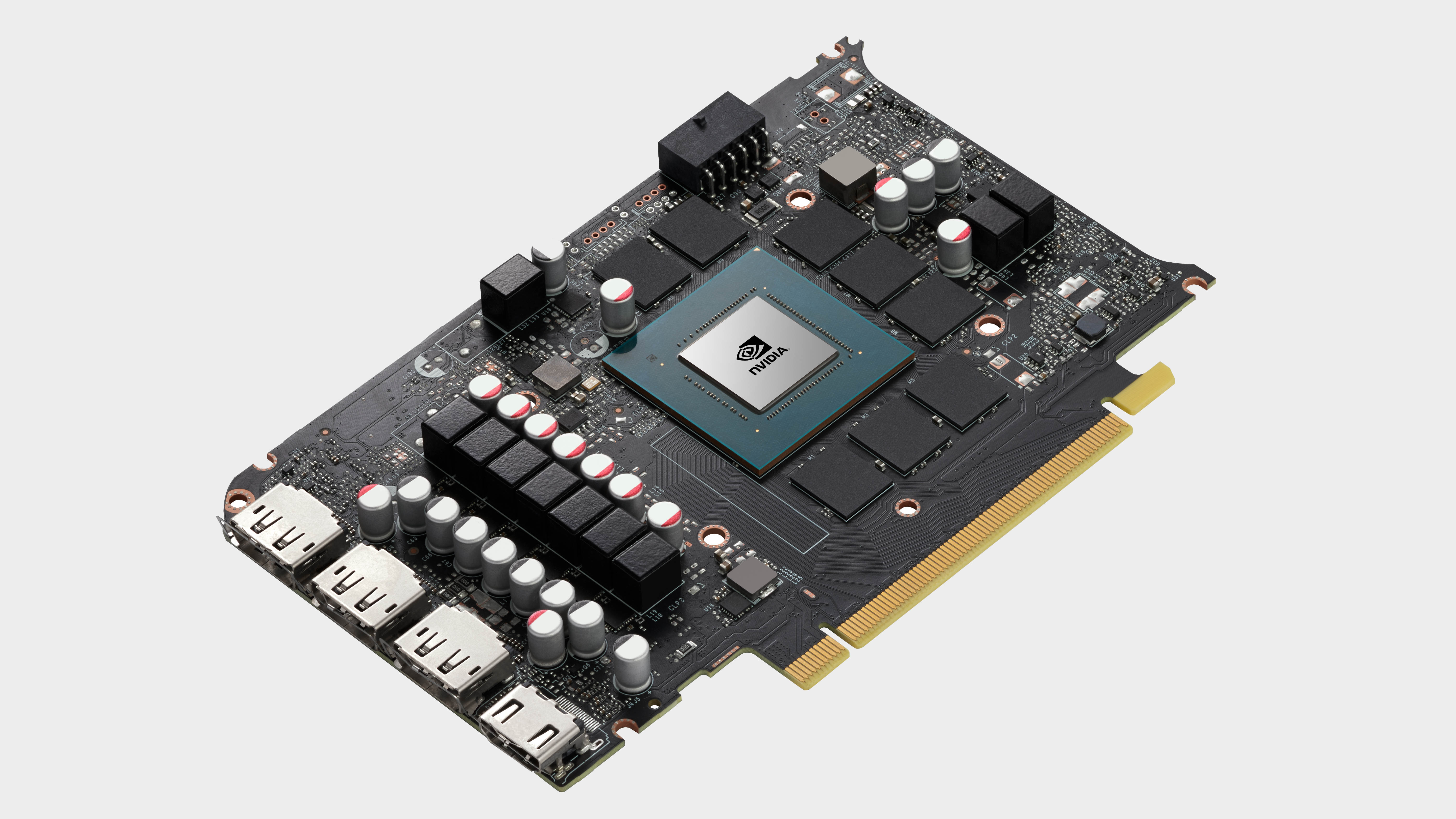
Nvidia RTX 3060 Ti specs
The RTX 3060 Ti features a cut-down GA104 GPU at its not-so-gooey silicon centre, even so delivers more than a modicum of CUDA Cores with a total of 4,864. That's markedly above the RTX 2080 Super at 3,072 CUDA Cores and a significant departure from the RTX 2060 Super at 2,176.
Let us not forget the RTX 2060 Super is, for all intents and purposes, the RTX 3060 Ti's opposite number for the RTX 30-series. The two cards' price tags match at launch, at $399 (£369), but the significant pull of the RTX 3060 Ti towards the performance of the RTX 2080 Super yet again shows the tremendous generational leap being introduced with the Ampere architecture.
GPU - GA104
Lithography - Samsung 8nm
Die size - 392mm2
Transistors - 17.4 bn
CUDA cores - 4,864
SMs - 38
RT Cores - 38
Tensor Cores - 152
GPU Boost clock - 1,665MHz
Memory bus - 256-bit
Memory capacity - 8GB GDDR6
Memory bandwidth - 448GB/s
TGP - 200W
Launch price - $399 (£369)
The RTX 3060 Ti features a decent boost clock at 1,665MHz, rendered partially irrelevant due to Nvidia's GPU Boost technology, which will often see this GPU far exceed that under load—around 1,875MHz on average. That makes it the fastest of the RTX 30-series so far. This is also a reference Founders Edition card so we're not looking at any overclocking out of the box. However, general availability of the Founders Edition coincides with the launch of AIB third-party RTX 3060 Ti's (December 2, 2020), so keep an eye out for OC models if you're interested in pushing things a little more.
You'll miss out on the Founders Edition shroud if you do, however. It's near-enough the exact same cooler design as the RTX 3070, which makes it on par with my personal favourite of the lot, but it does differ in one minor way: The tone of the metal finish on the RTX 3060 Ti is considerably lighter than the dark grey for the three 30-series cards above it.
That just pushes the RTX 3060 Ti to the top of the leaderboard in my eyes, but it's purely an aesthetic shake up. Both offer near-enough the same quiet and cool operation as the rest bearing Nvidia's own-brand heat sink and clever cut-out cooler, and it similarly makes use of the new compact 12-pin power connector. Don't worry, there's a single 8-pin to 12-pin adapter included in the box.
Yet these are mostly aesthetic changes, and while that cooler provides more than adequate chilling power, it's the overhaul to the rasterised rendering pipeline across the Ampere architecture that is the architect of its performance boon. The specifics of which you can read more about in our Nvidia RTX 3080 review, but once again for those in the back…
Each streaming multiprocessor, or SM, within Nvidia's RTX 30-series GPUs has received double the number of floating point (FP32) units as past GPU generations. The benefit of which is greater parallelism and the ability to not only alternate between integer and floating point operations depending on the workload but utilise a greater number of FP32 units when there are fewer integer operations required. That happens a lot of the time in gaming, hence the switch.
The FP32 units within any given GPU are also what Nvidia counts as the CUDA Core total for each GPU specification. So when comparing the RTX 30-series with the RTX 20-series, the reality of such an architectural split becomes abundantly clear.
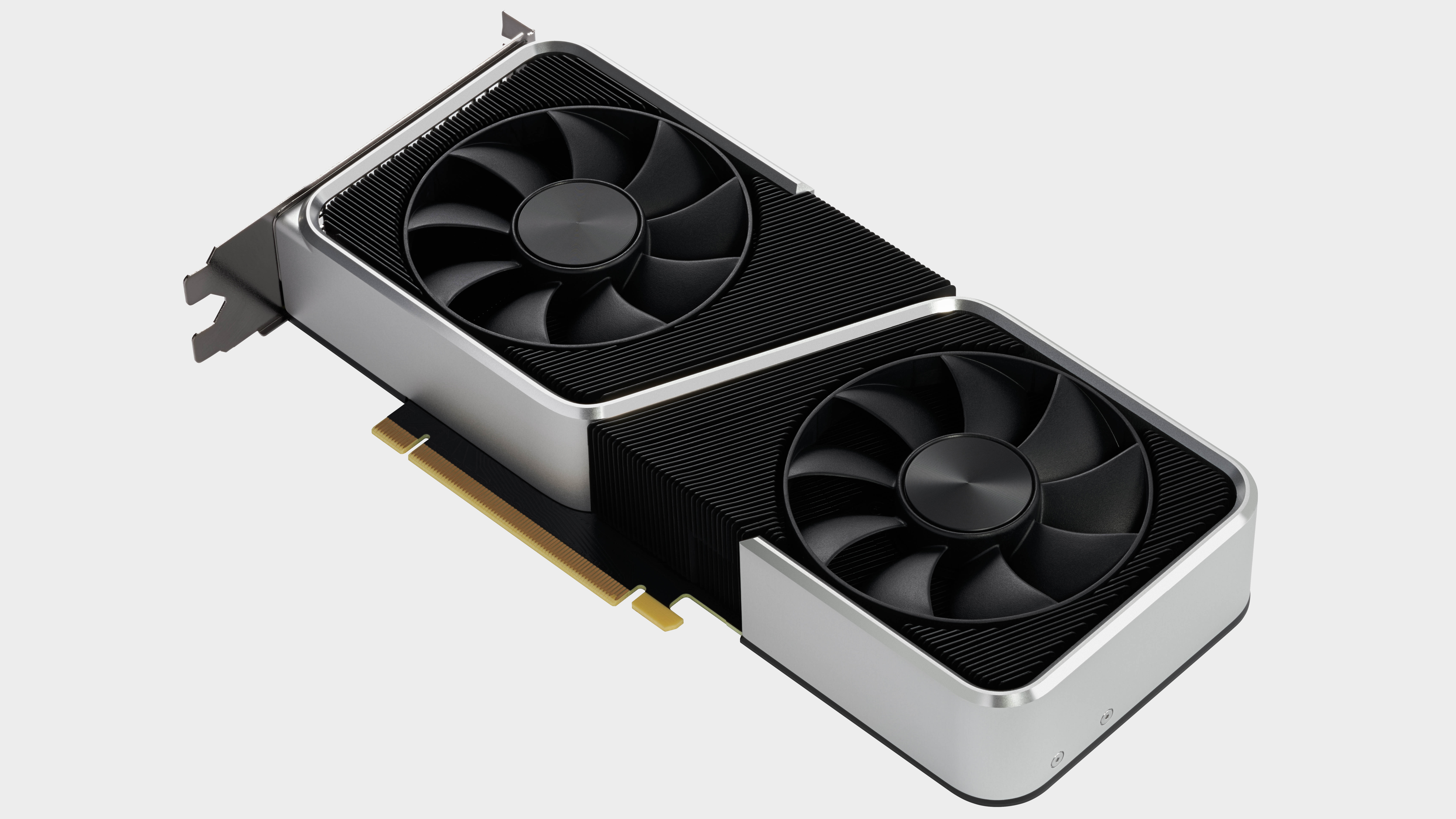
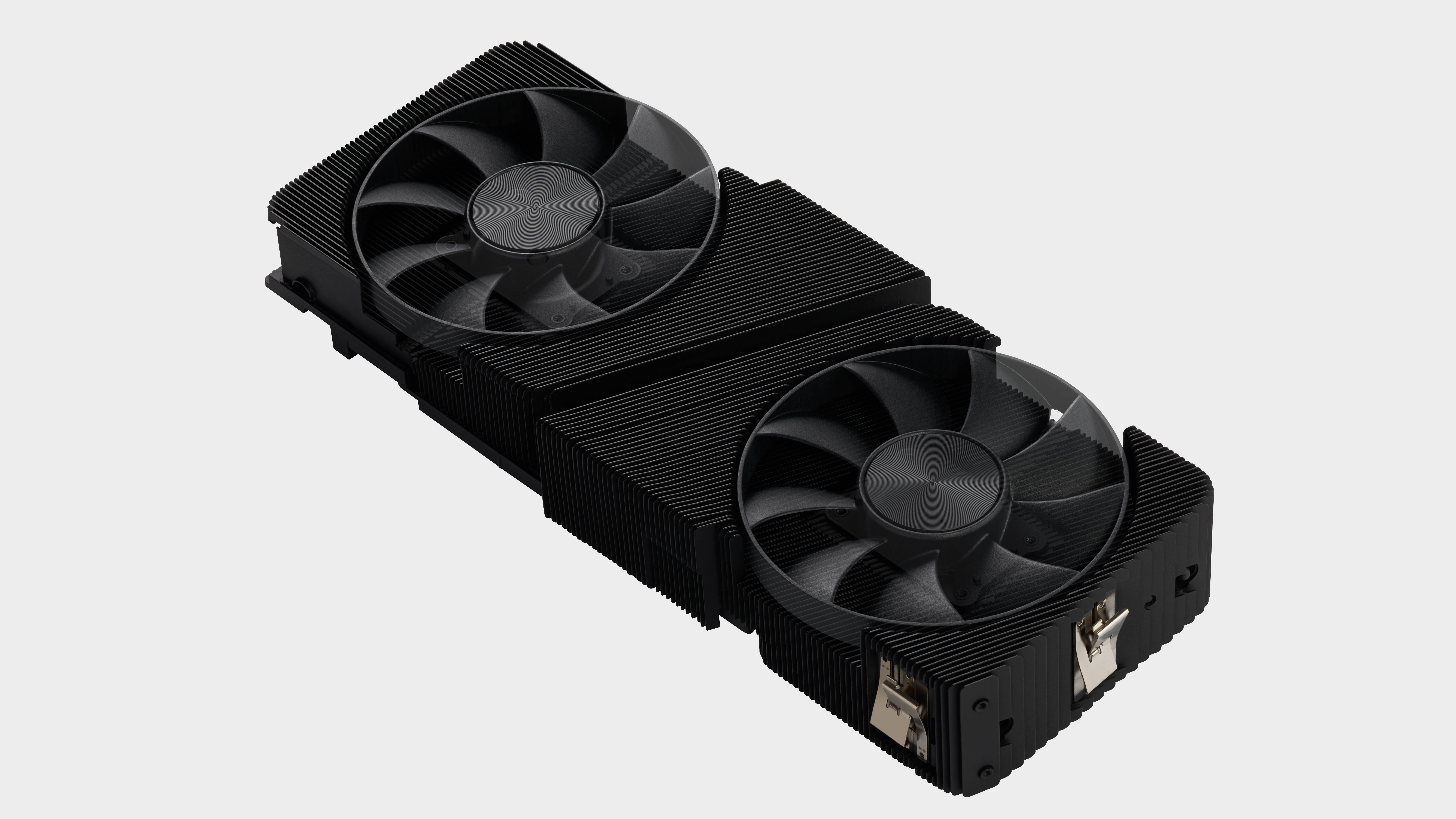
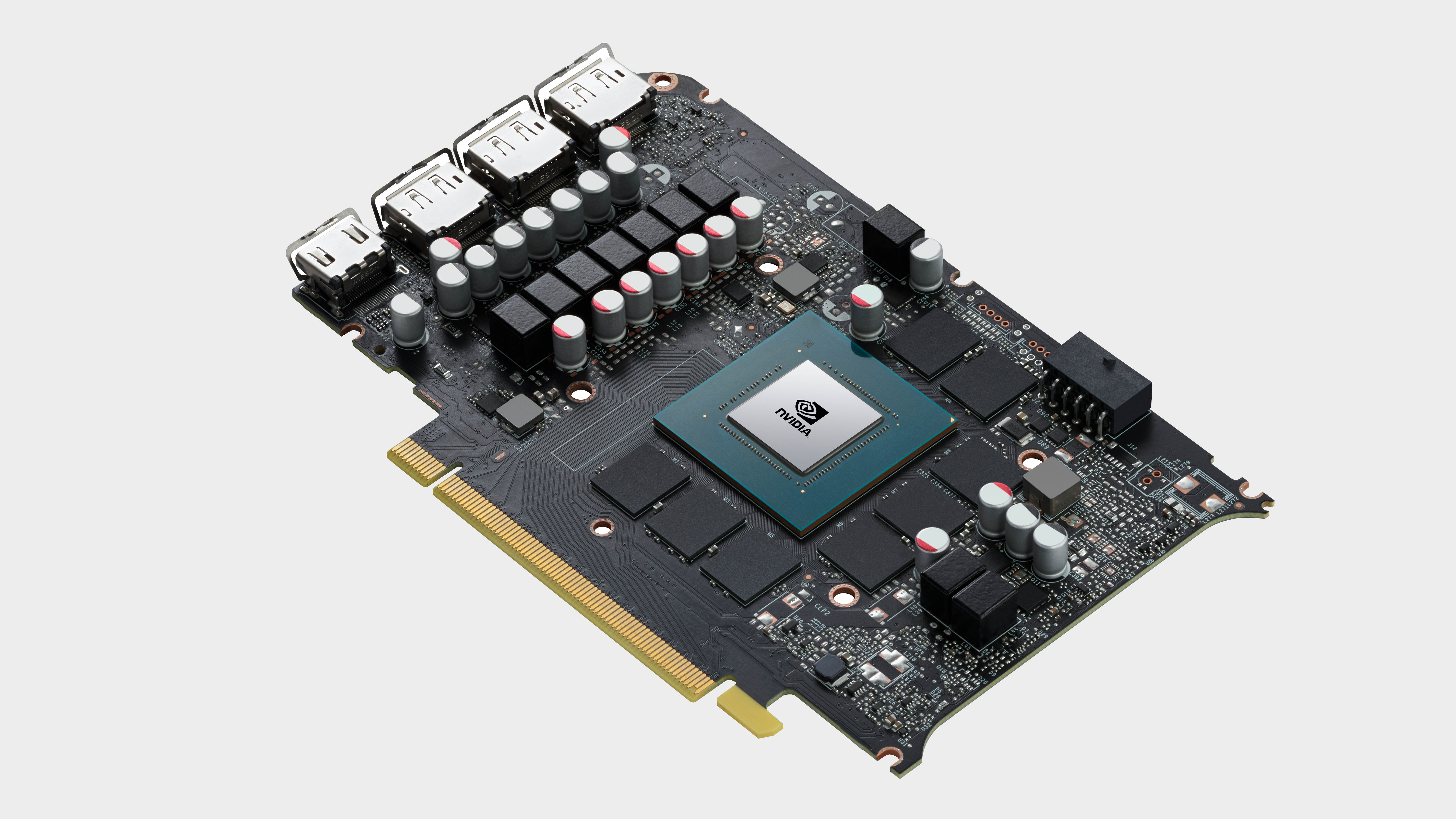
Where you might expect a card closer to the 2,176 core count of the RTX 2060 Super, we're now looking at the 4,854 CUDA Core RTX 3060. The same could be said for the 4,352 CUDA Core RTX 2080 Ti's (sort of) opposite number, the RTX 3090, fit with 10,752 CUDA Cores.
It's all been an effective experiment in GPU topology, too, with existing RTX 30-series GPUs managing to dominate their RTX 20-series counterparts. And I'm pleased to report that the RTX 3060 Ti is no different. But we'll get to that.
With a capacity at 8GB of GDDR6 and a complimentary 256-bit memory bus, the RTX 3060 Ti is capable of an overall memory bandwidth of 448GB/s—a match for the RTX 3070 in every way. That's the only possible concern for any potential buyer from the specs list that I can point to with any possible consternation.
It's not that an 8GB memory capacity has seemingly much of an impact on gaming performance right now—we've seen as much fairly consistently through our testing of AMD's 16GB RX 6800-series cards and the 10GB RTX 3080 and 8GB RTX 3070. But that's not to say it won't at some time or another.
I won't speak to unsubstantiated rumour too greatly within a review, but we've heard multiple rumours for yet unannounced RTX 30-series cards with possible higher memory capacities than those currently available, including an RTX 3080 with 20GB VRAM, an RTX 3080 Ti with 20GB VRAM, and even an RTX 3060 with up to 12GB VRAM.
It's hardly proof of anything, I must admit. But it does make me wonder whether it's merely a reflexive action in light of AMD's 16GB (and possible 12GB) RX 6000-series graphics cards, or if there is some dark cloud approaching for those of us that own cards with, perhaps let's say, modest memory capacities and overall bandwidth.
Every game developer I've spoken to has been keen to make better use of greater high-speed memory stores for more elaborate textures and the like, but that shouldn't necessarily mean anyone with less than a given memory buffer will be all out of luck. Scalability is still the name of the game for almost every walk of development, and not the least bit PC gaming.
But as I say, that's not so much a reality we're having to deal with today. The RTX 3060 Ti manages to maintain a steady canter in modern games across 1080p, 1440p, and even 4K—which is the first time I believe we can safely say that of an xx60-level graphics card without laboured breath or serious caveats.
Performance
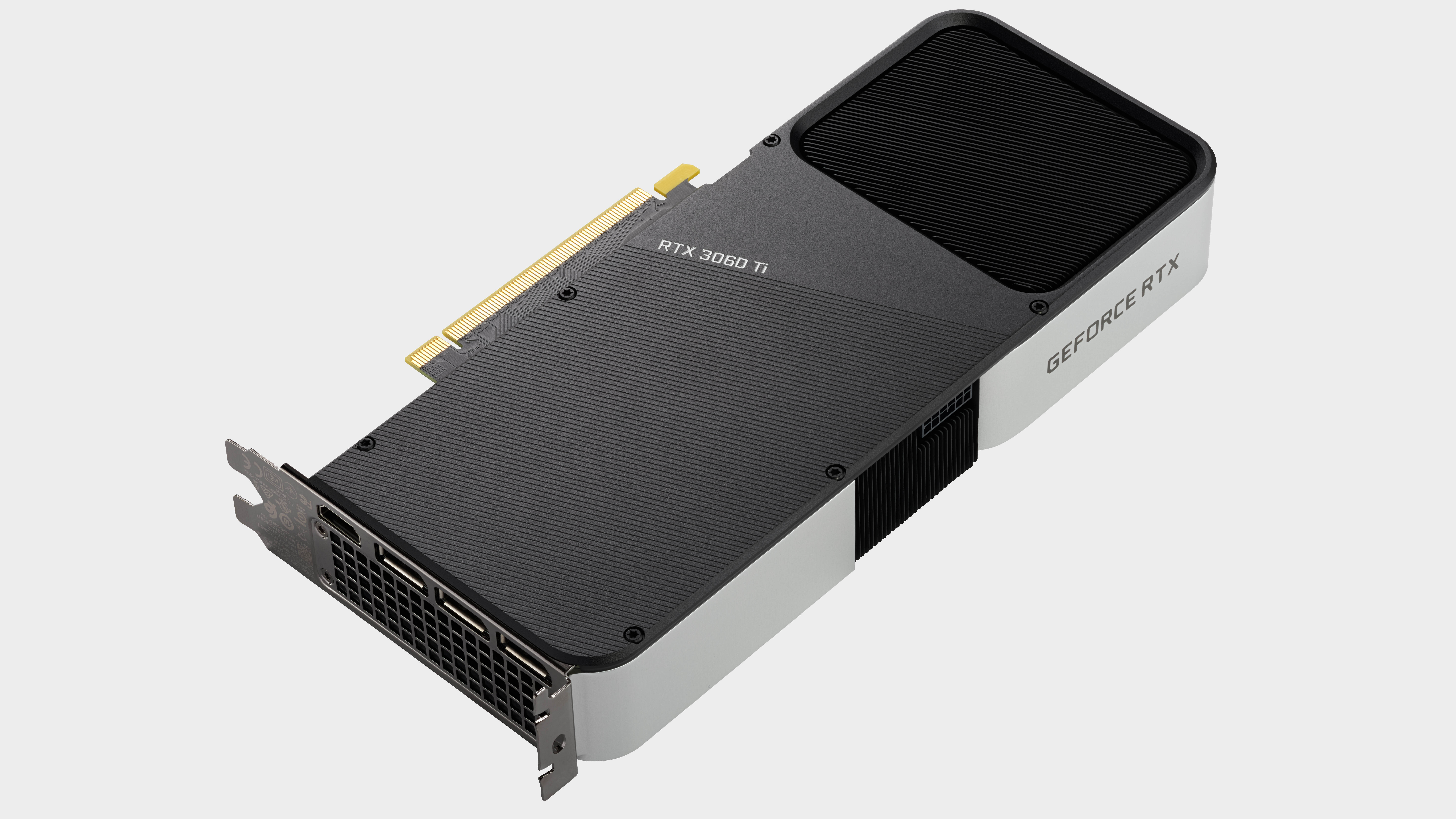
Nvidia RTX 3060 Ti performance
With roughly 17% fewer CUDA Cores than an RTX 3070, you can almost have a guess where RTX 3060 Ti performance will land with with pretty comfortable accuracy.
You wouldn't be all that far off just calling it a day at around a 17% delta between the two, either. At its worst, you'll see almost exactly 17% between the two cards. But don't forget there is a clock speed differential to factor in between the two that can throw things a little out of whack in a handful of games, and sometimes the RTX 3060 Ti can stick within high single-digits of the RTX 3070 frame rates.
But that's hardly a referential touchstone we can all get behind—what with very few RTX 3070s available to purchase today. Instead, it's the RTX 2080 Super that the RTX 3060 Ti bears down upon. For the most part, you'll find the RTX 3060 Ti a nose ahead of the RTX 2080 Super, with the odd exception (increasingly at lower resolution) where the RTX 2080 Super just manages to inch into the lead.
Ampere's 2nd gen RT cores show their worth across ray tracing benchmarks, too, and despite having fewer of them (RT Core count is tied to SM count) the RTX 3060 Ti is more than a match for the RTX 2080 Super in ray-traced games—which is pretty impressive for 12 fewer RT Cores.
4K gaming performance
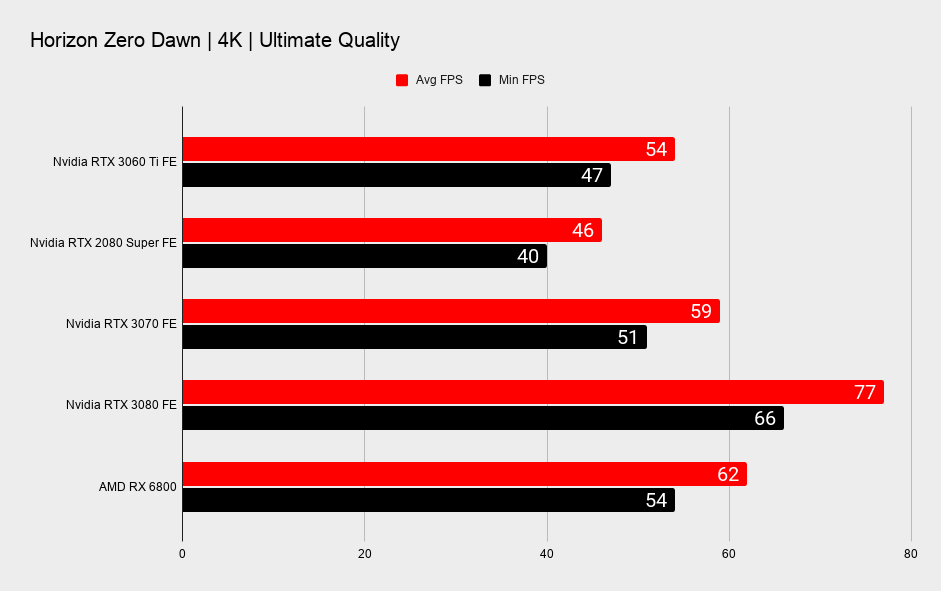
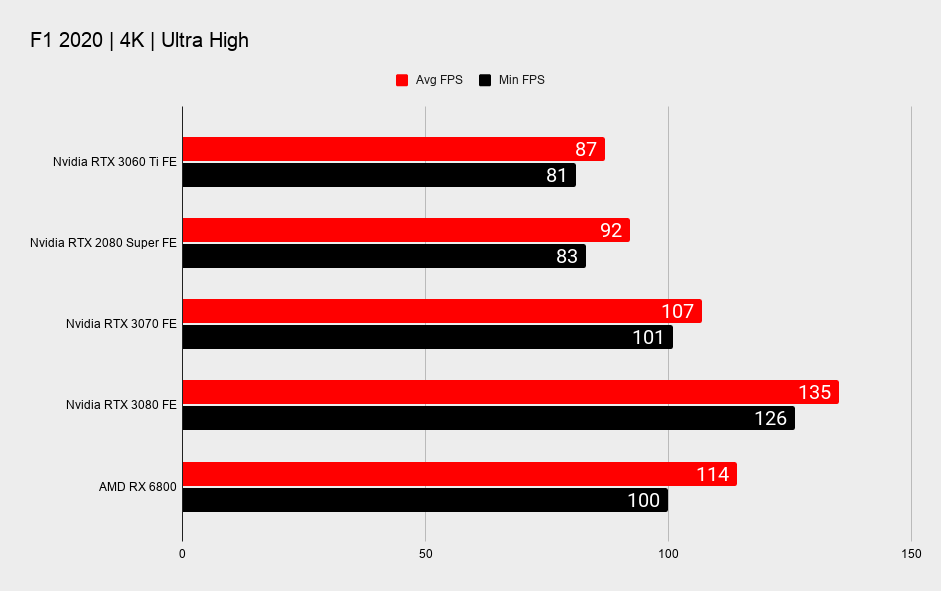
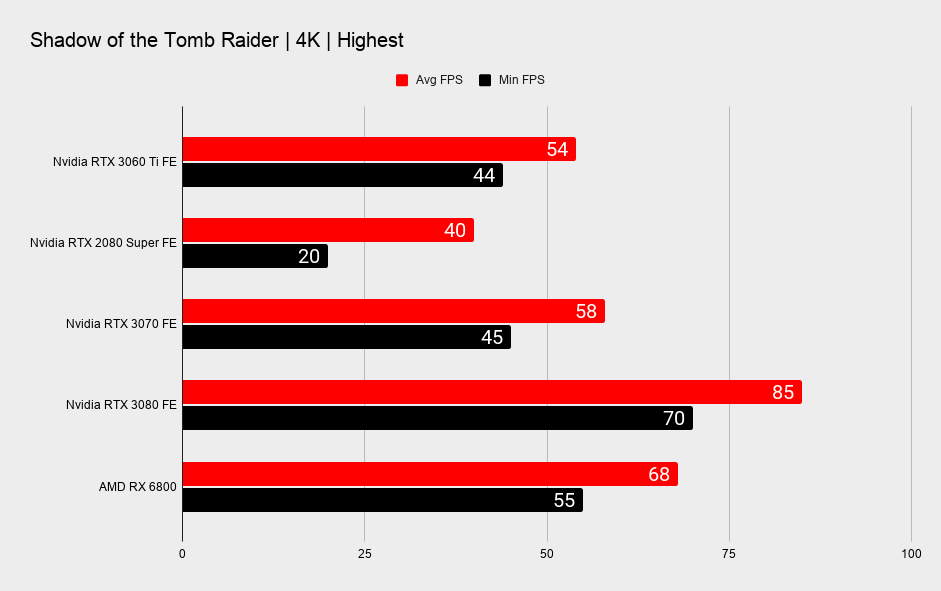
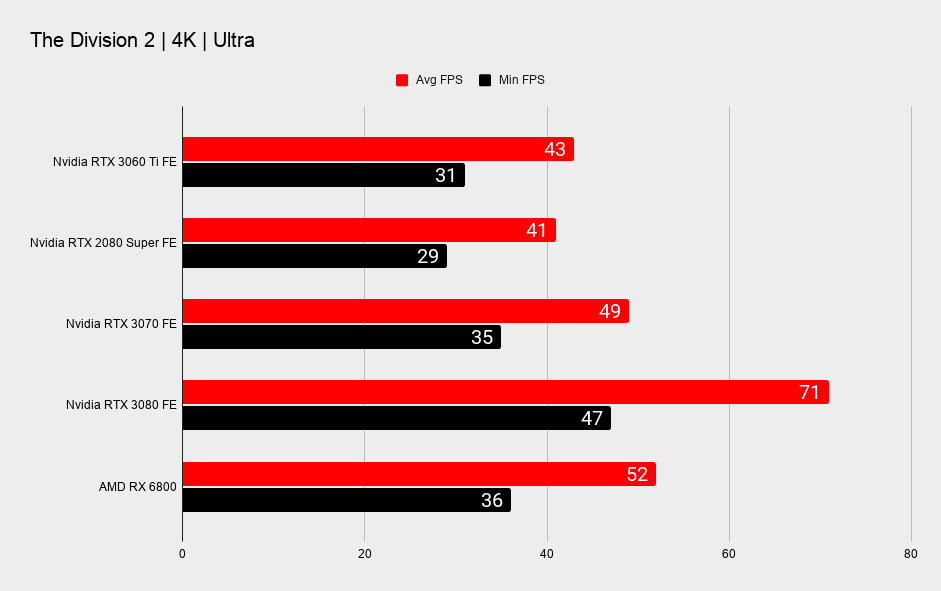
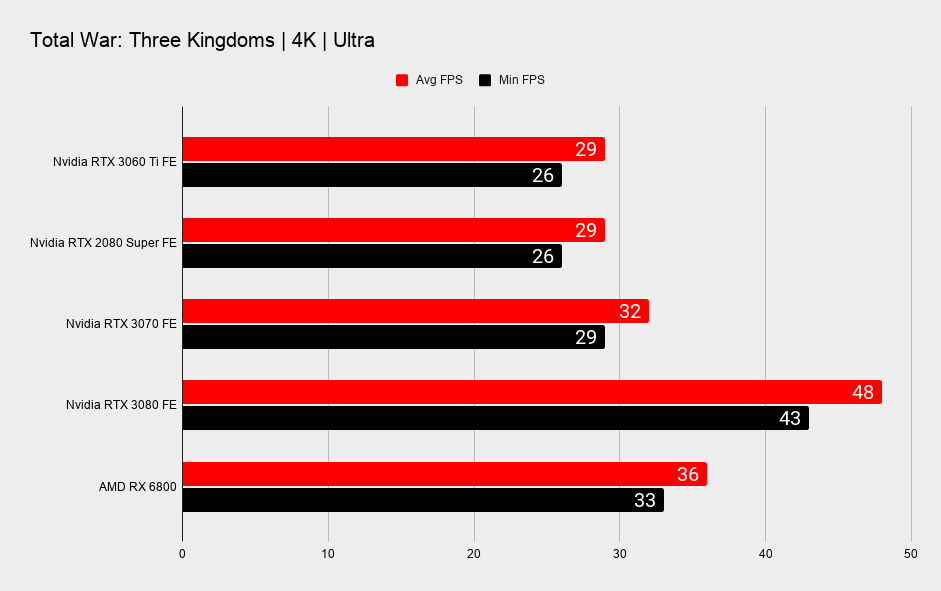
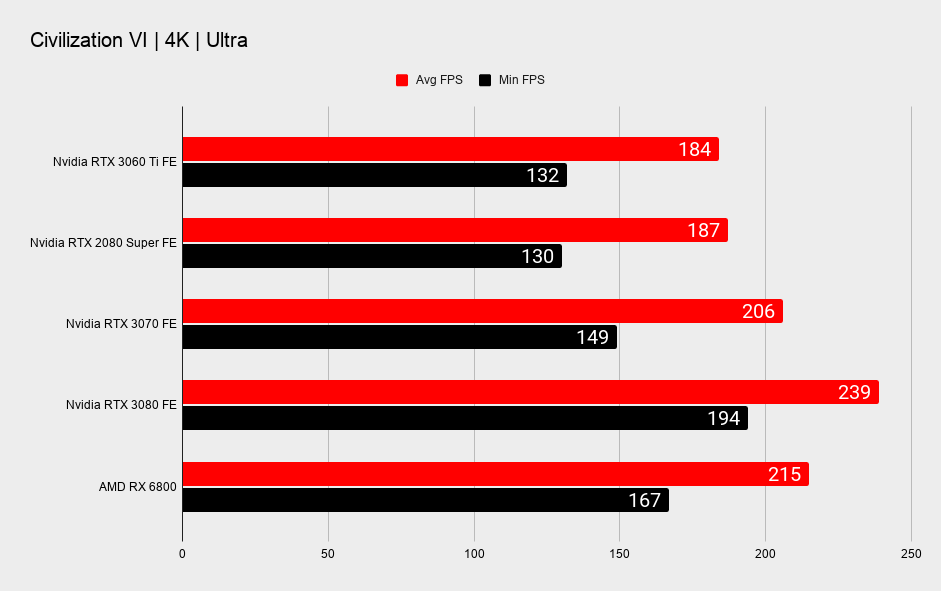
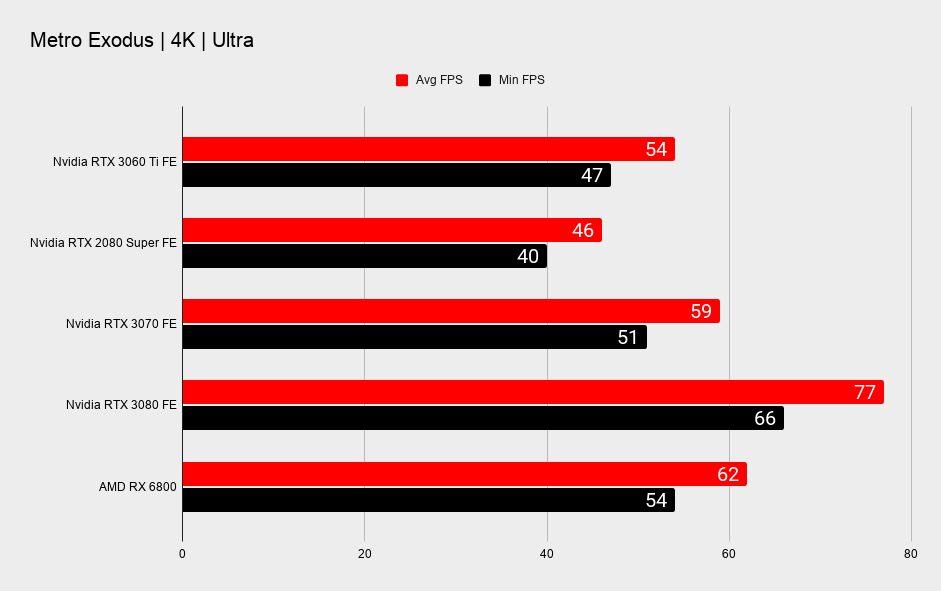
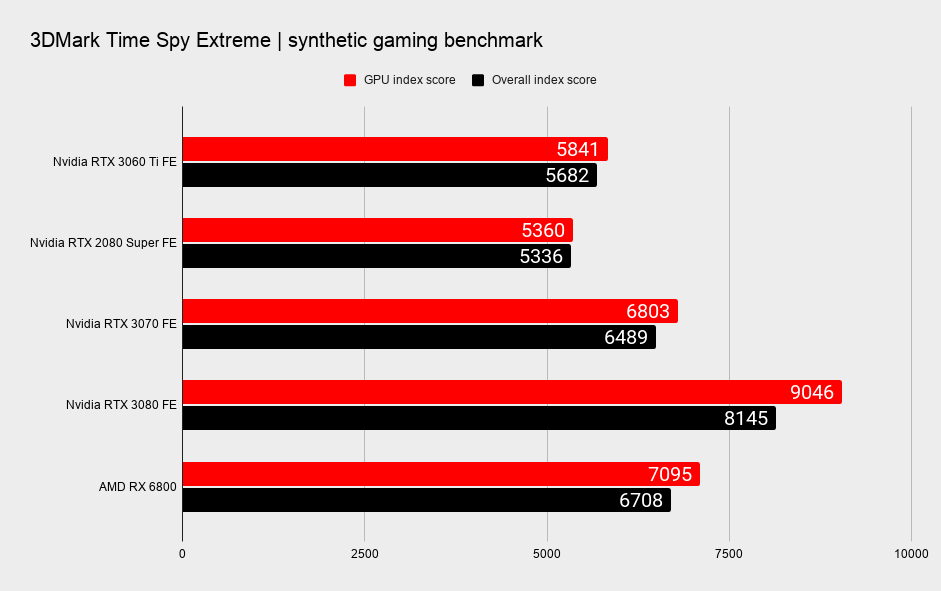
With even the RTX 2070 deemed worthy of 4K performance, the fact we're seeing the RTX 3060 Ti managing to push around more than eight million pixels, with relative ease, should come as no surprise.
The RTX 3060 Ti trades blows with the RTX 2080 Super throughout our benchmarking, but at 4K you see it tends to win out over the Turing card. Perhaps it's the increased FP32 unit count coming into play, as both cards feature very similar memory configurations at 8GB of GDDR6 and a 256-bit memory bus.
And there's something to be said for the RTX 3060 Ti managing, in some games, to stay not far off the pace of the RTX 3070. With very similar configurations, that's perhaps none too surprising, but if you consider the RTX 3060 Ti is launching at $399, 20% cheaper than the RTX 3070, and managing to stay within a single-digit frame rate delta at times, that's a pretty good showing from the pared-down GPU.
1440p gaming performance
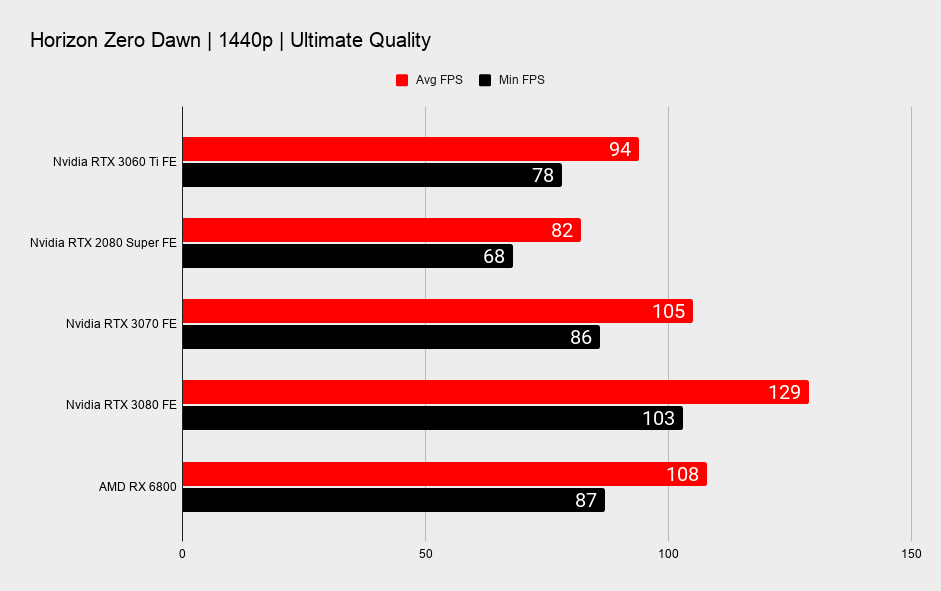
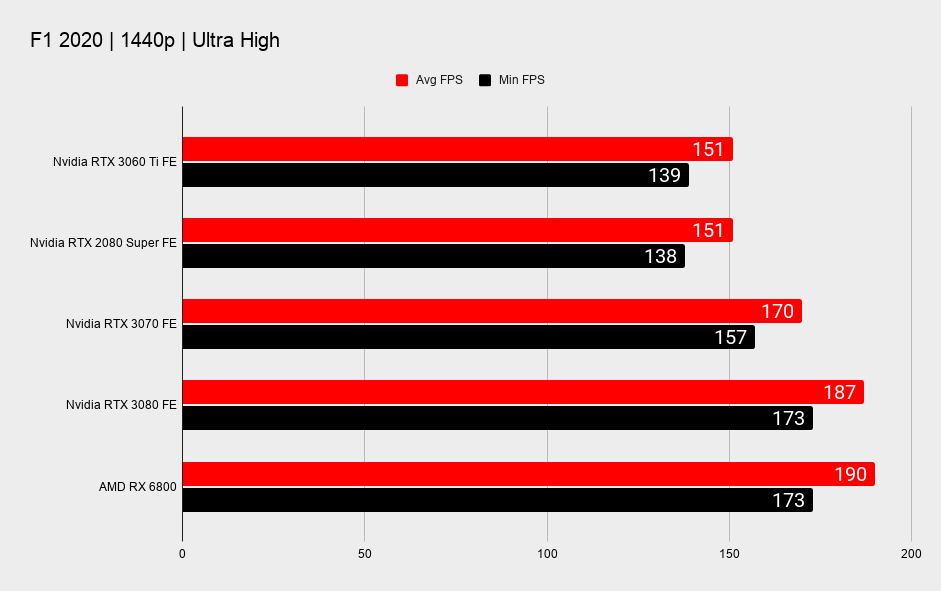
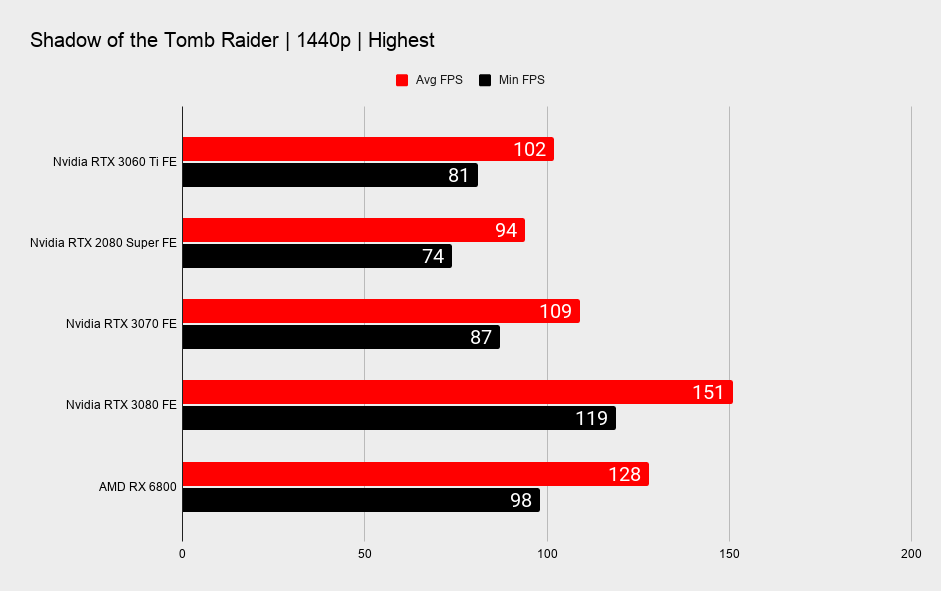
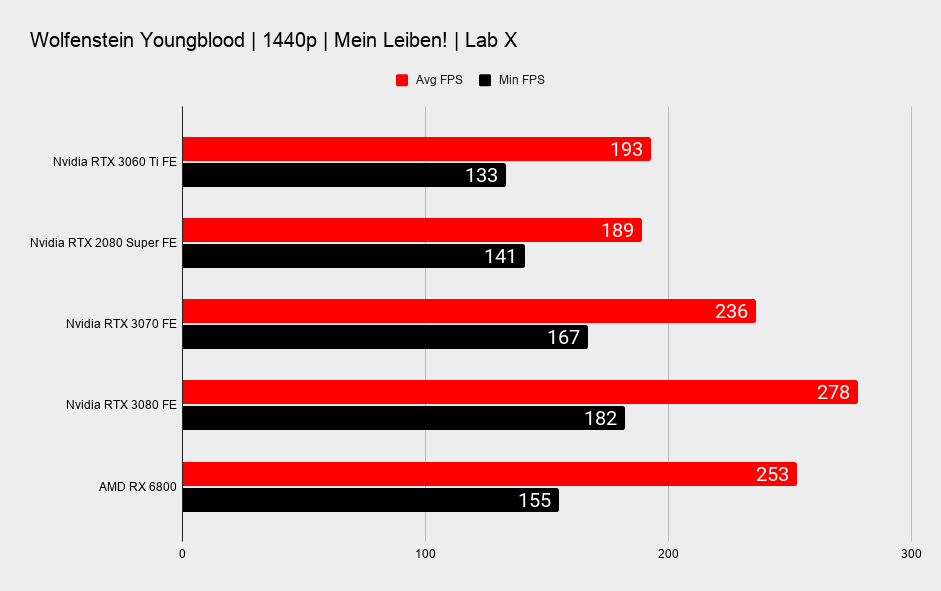
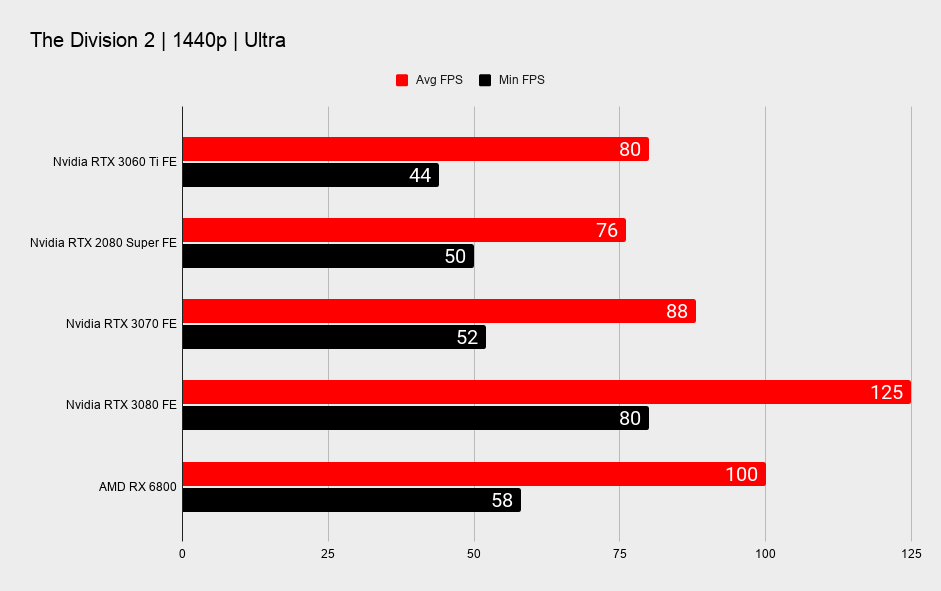
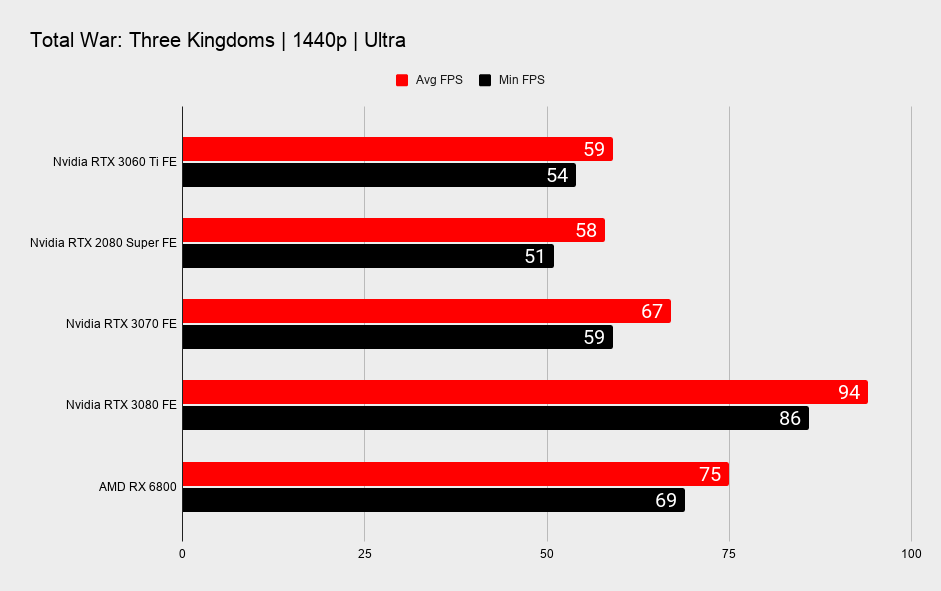
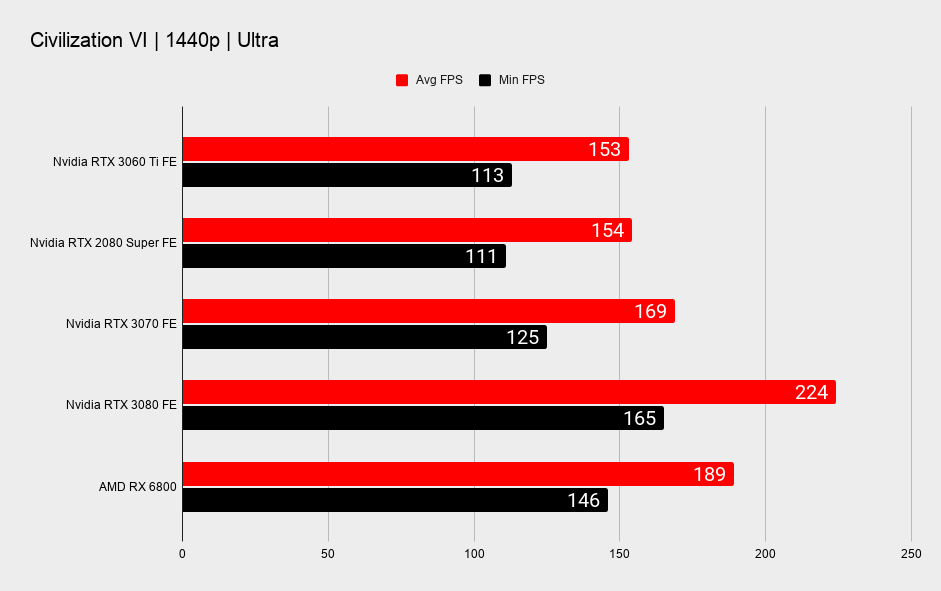
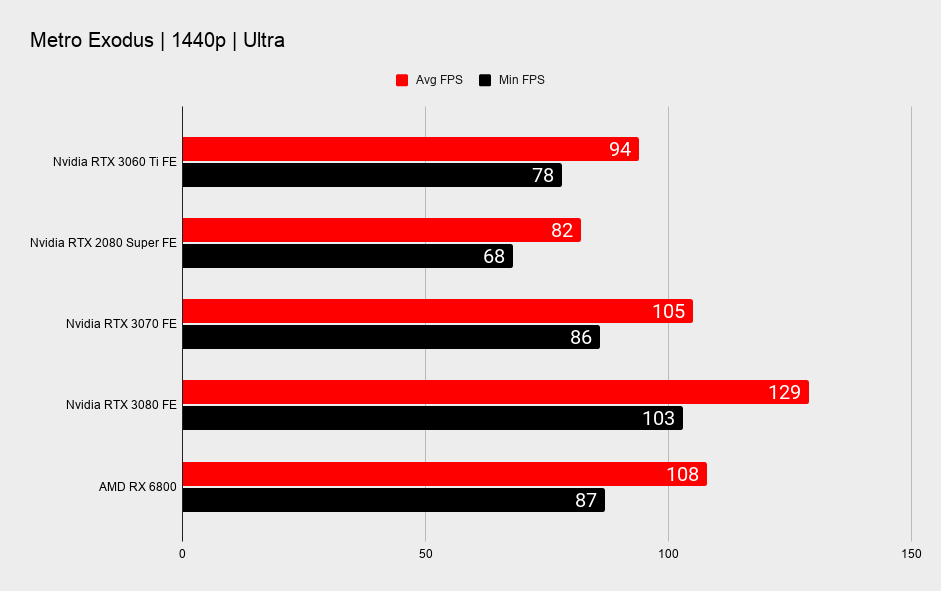
Once again, the RTX 3060 Ti is dominating Nvidia's RTX 2080 Super at 1440p. Usually by a pretty significant lead, too. Civilization VI appears to be a game that favours the older architecture at higher resolution—make sense of that one—and it's all tied up in F1 2020, but this is a clear win for Ampere and the RTX 3060 Ti.
With framerates creeping upwards of 144fps in the least demanding games, and well over 60fps in those with an insatiable hunger for performant GPUs, the RTX 3060 Ti makes a great case for itself as a fantastic 1440p graphics card, and one that should see you well taken care of until 4K GPUs and monitors drop in price to become a little more affordable.
1080p gaming performance
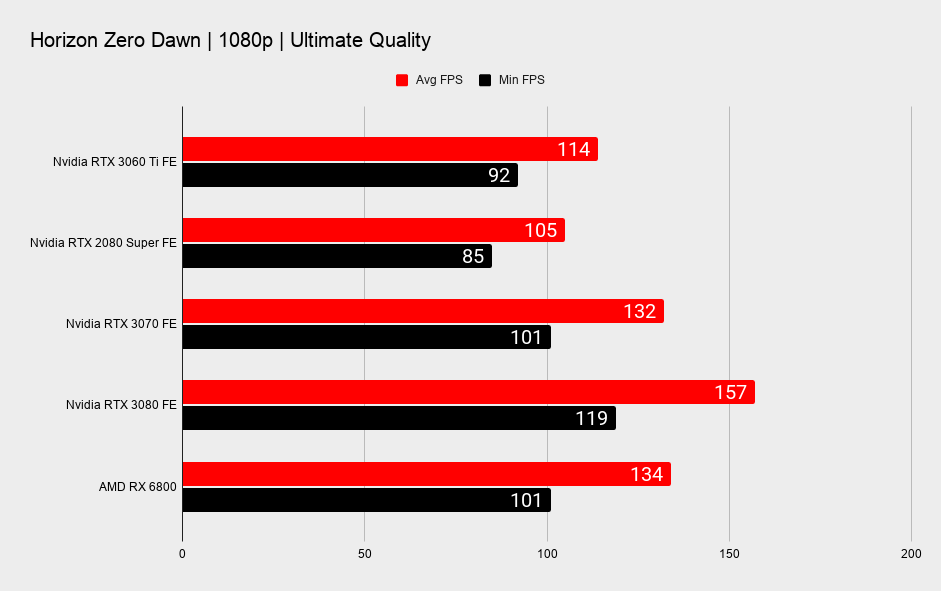
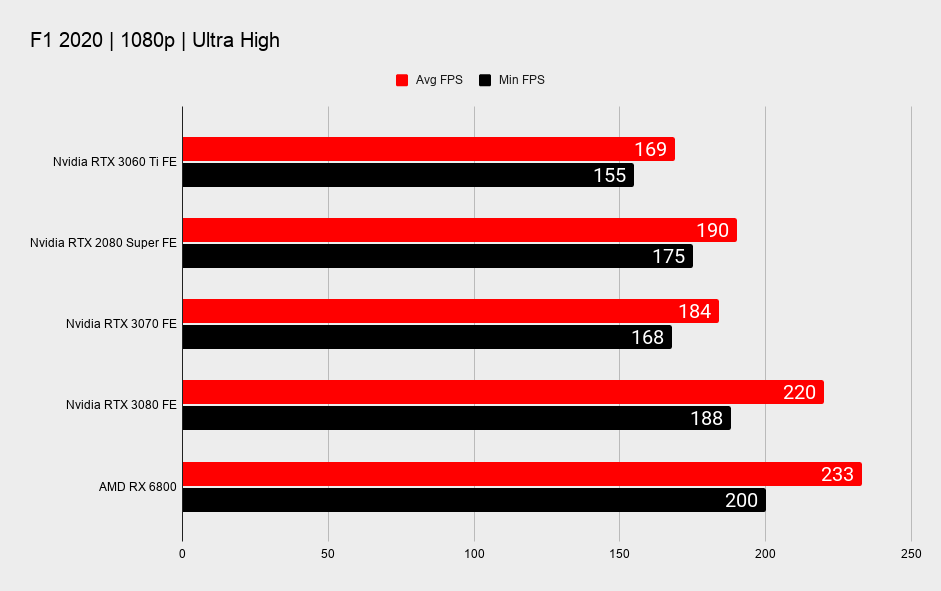
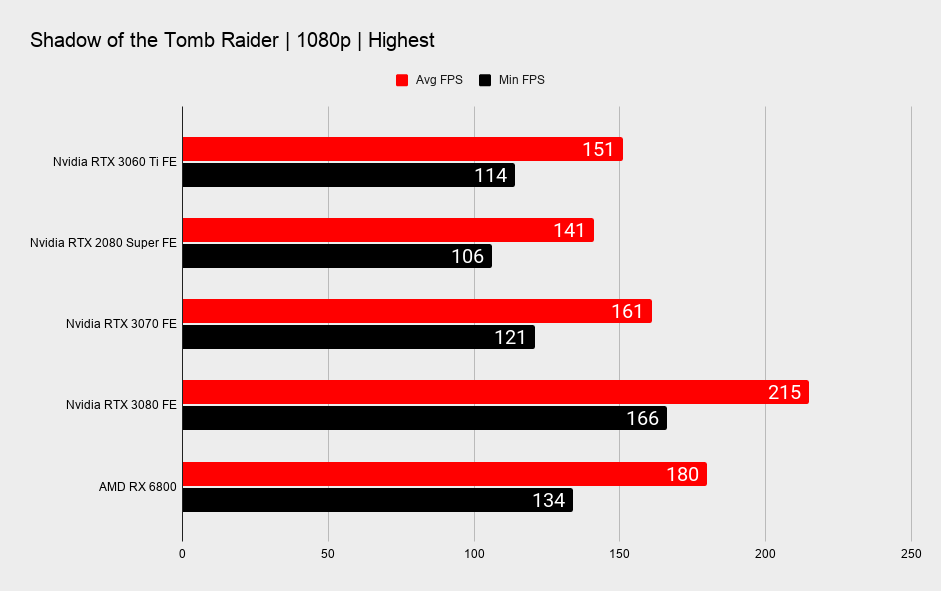
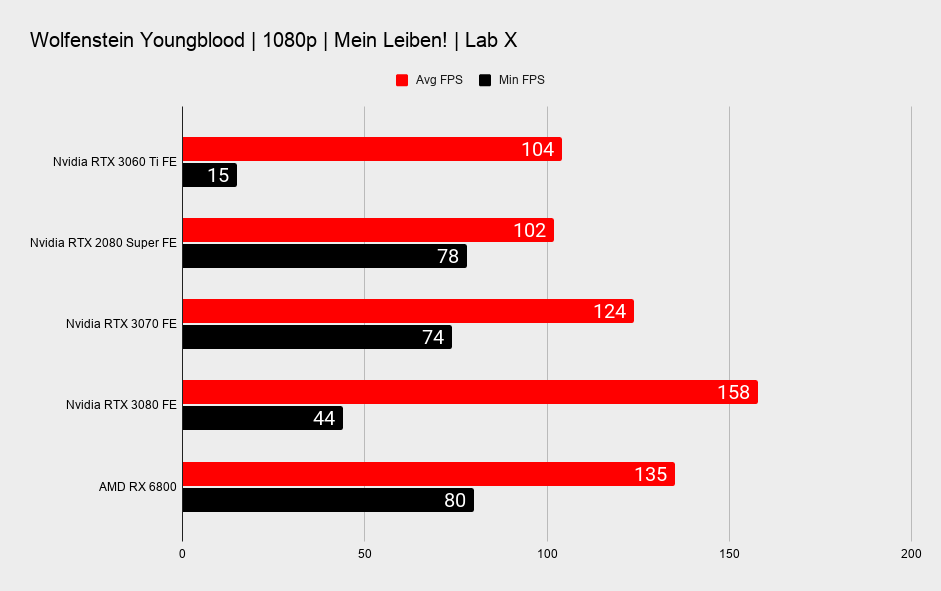
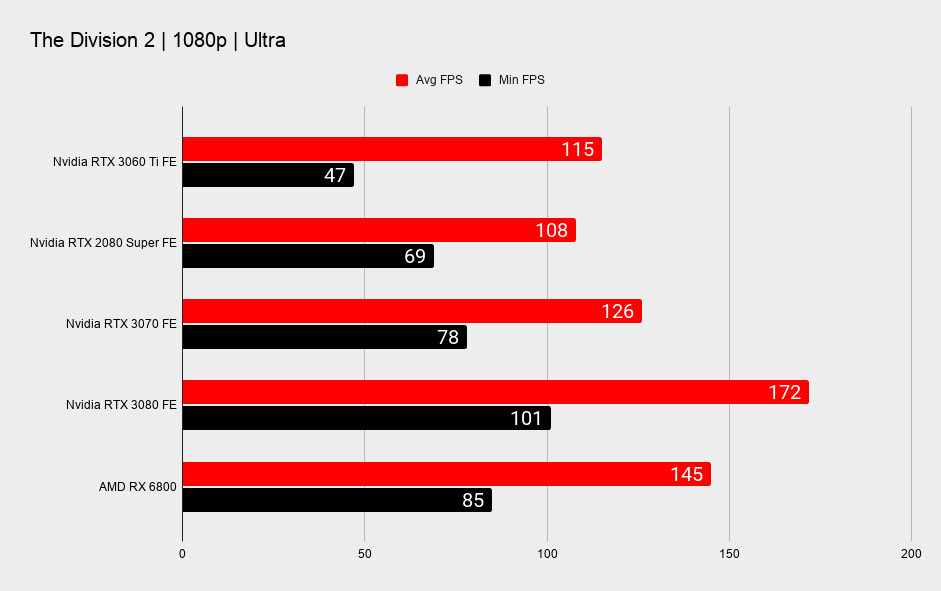
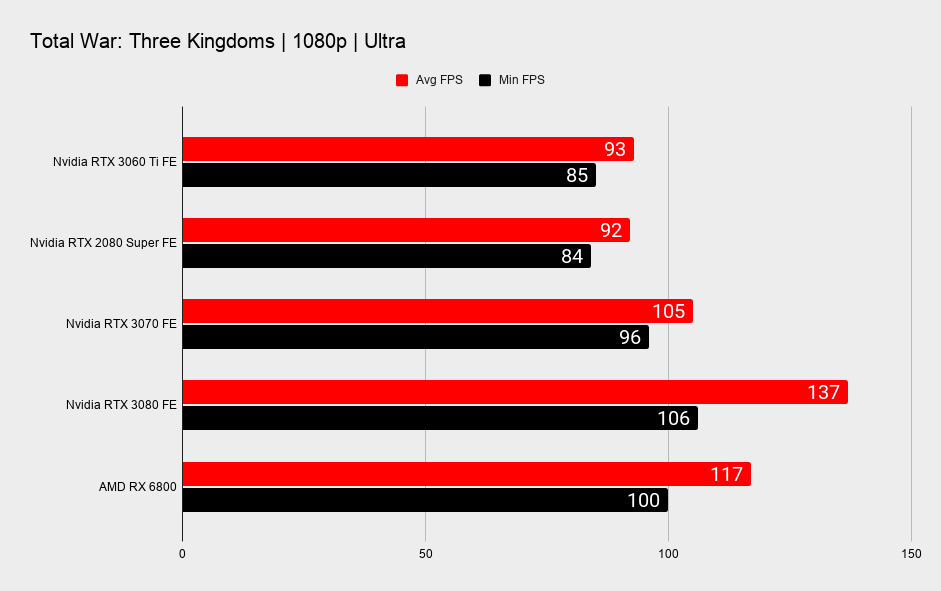
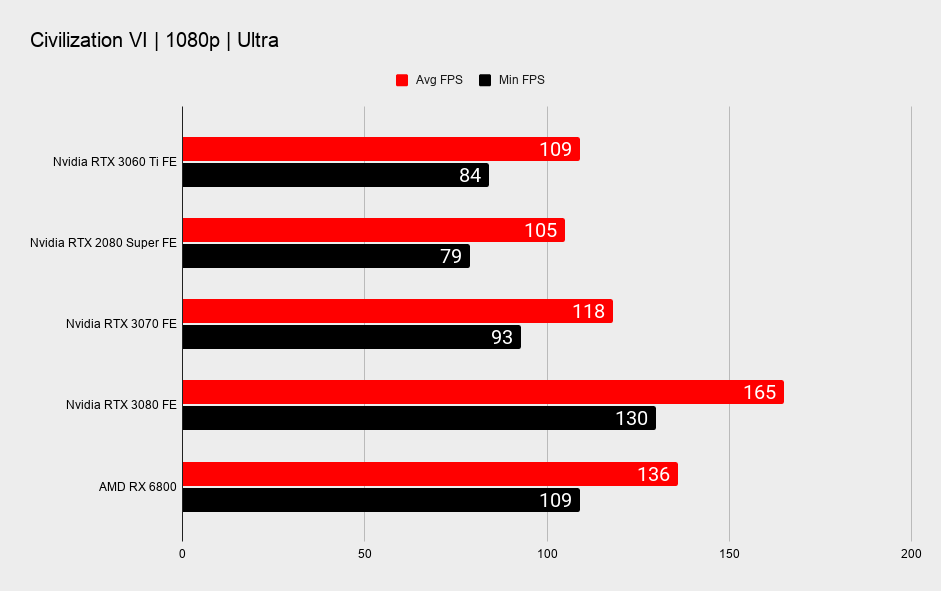
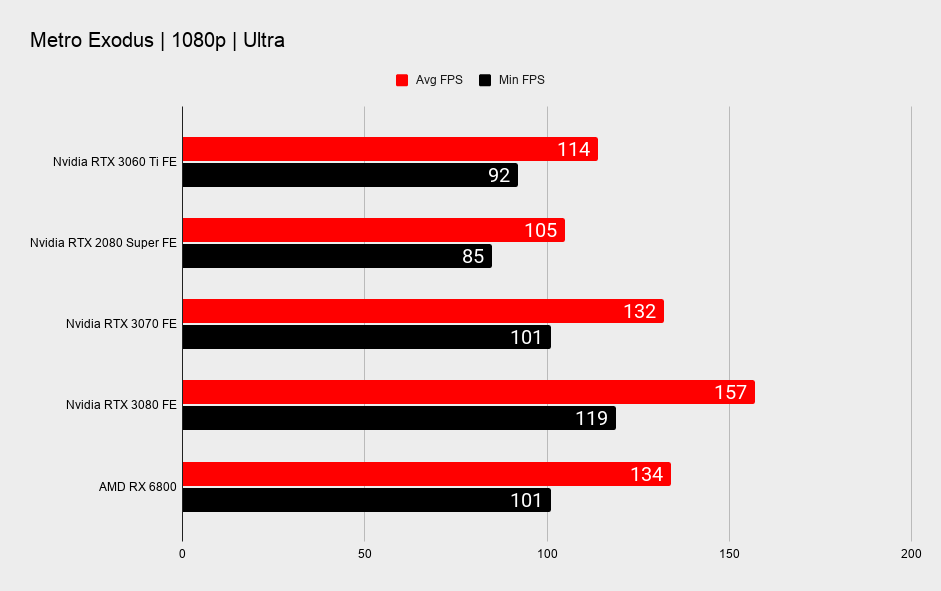
The RTX 3060 Ti could be seen as a great GPU for high refresh rate gaming at 1080p. There's not too much wasted resource in colossal memory buffers and the like, and so you get a decent blend of performance and cost.
That's pretty clear once again from the benchmarks, which see the RTX 3060 Ti sitting comfortably ahead of the RTX 2080 Super in all but F1 2020, which seemingly adores both Turing and the RX 6800-series cards. It'll be interesting to see how this one shakes out with, what can only be, the inevitable RX 6700-series competition from the red team. But all in good time.
For now, the RTX 3060 Ti carves out a heap of 1080p performance, and even closes in on the RTX 3070 in a couple of games.
Ray tracing performance
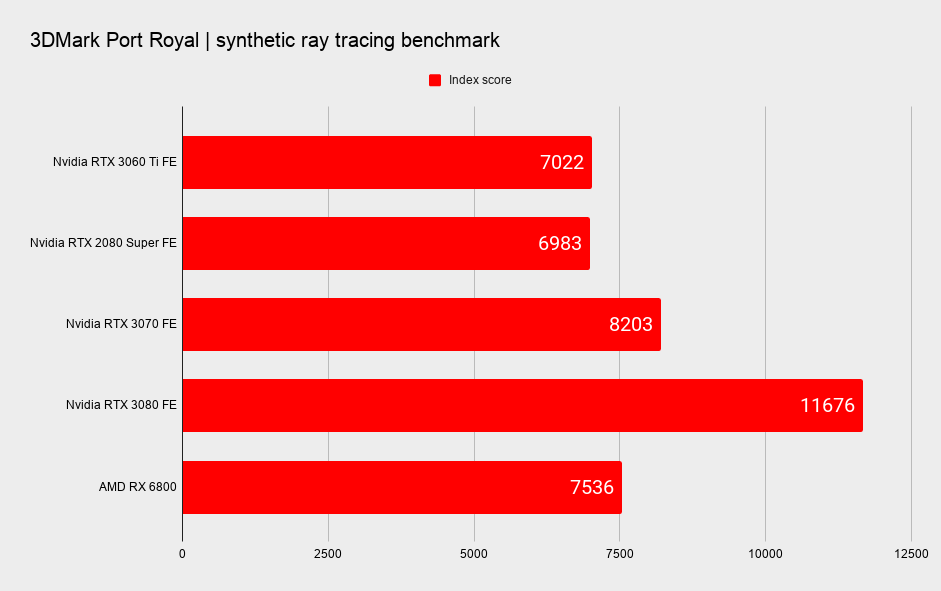
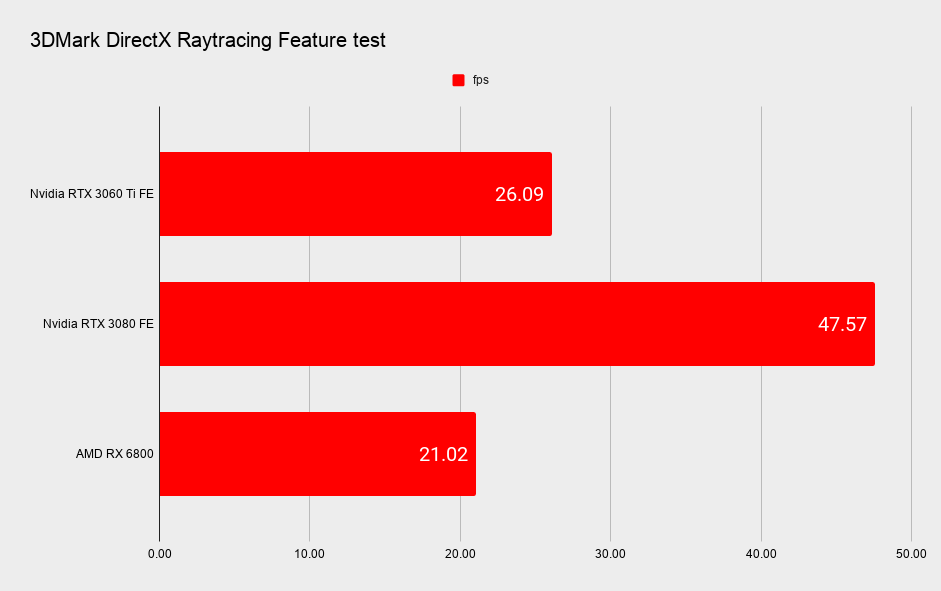
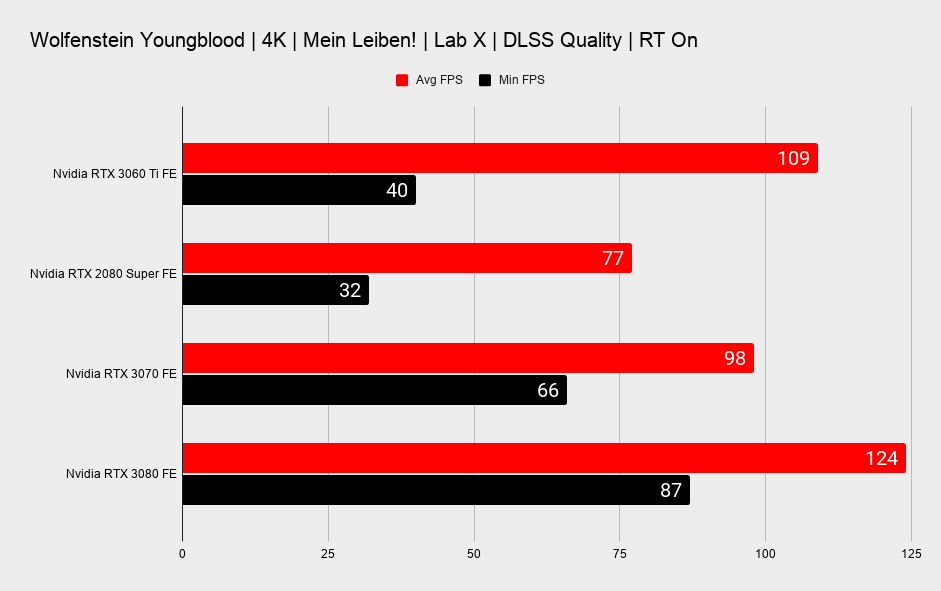
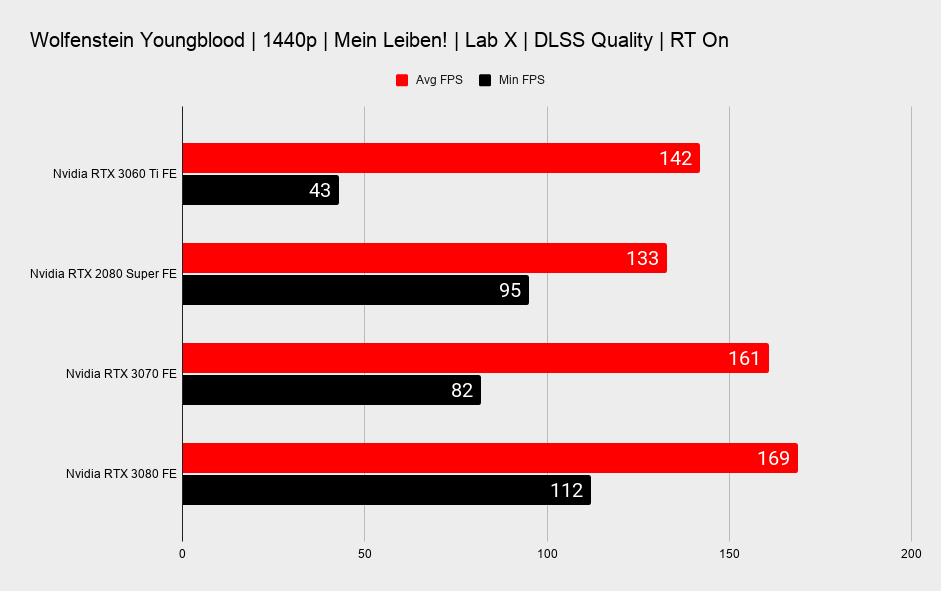
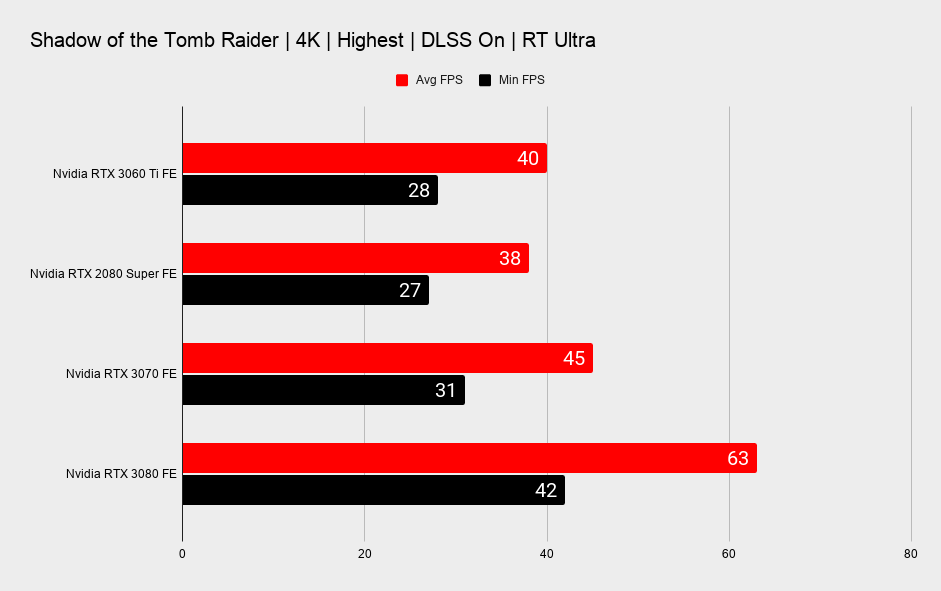
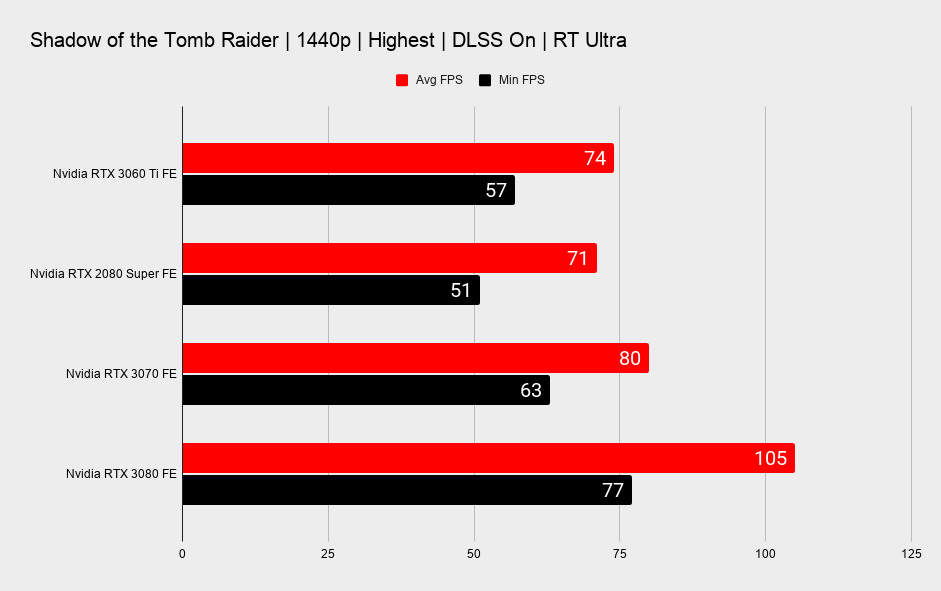
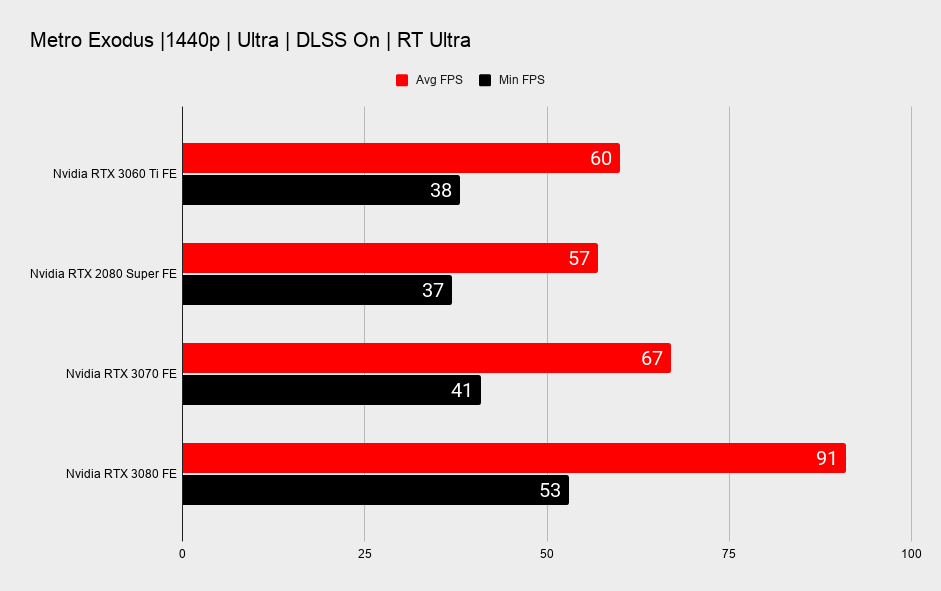
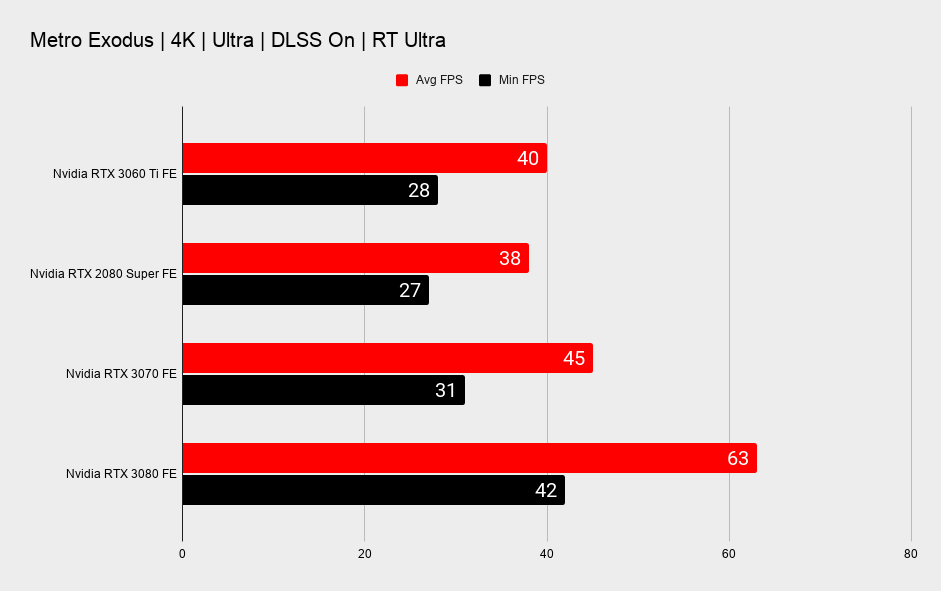
The Nvidia Ampere architecture comes with second generation RT Cores, and third generation Tensor Cores, with the Volta architecture initially introducing those AI accelerators way back when. It's clearly a superior approach by a decent degree over the previous Turing acceleration, and obviously against the Radeon version too, and that goes a long way to explaining how the RTX 3060 Ti with just 38 RT Cores can outperform the RTX 2080 Super with 48 RT Cores.
It's pretty close, but with a slight rasterised performance edge in the RTX games we've tested above, and the improvements to Ampere's RT acceleration, the RTX 3060 Ti comes out way on top.
The RTX 3060 Ti's ray tracing performance also goes a long way to raising the floor for overall ray tracing performance, with a significant advantage over the RTX 2060 Super with 34 (Gen 1) RT Cores.
Power and thermal
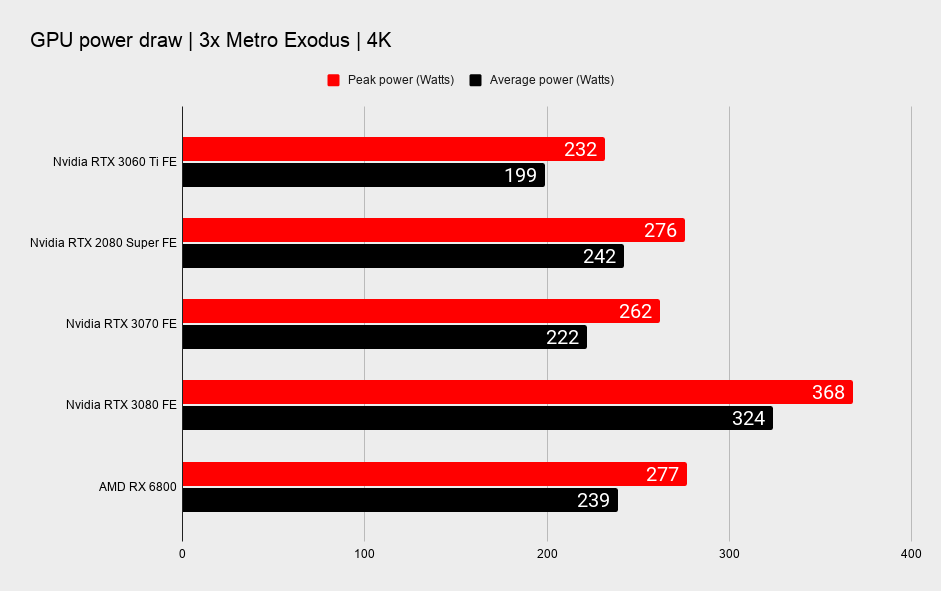
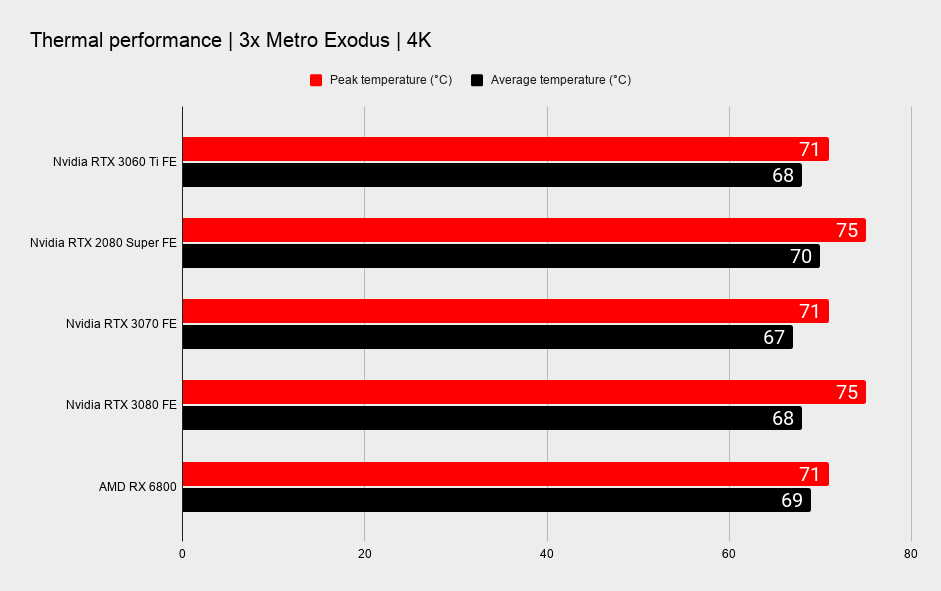
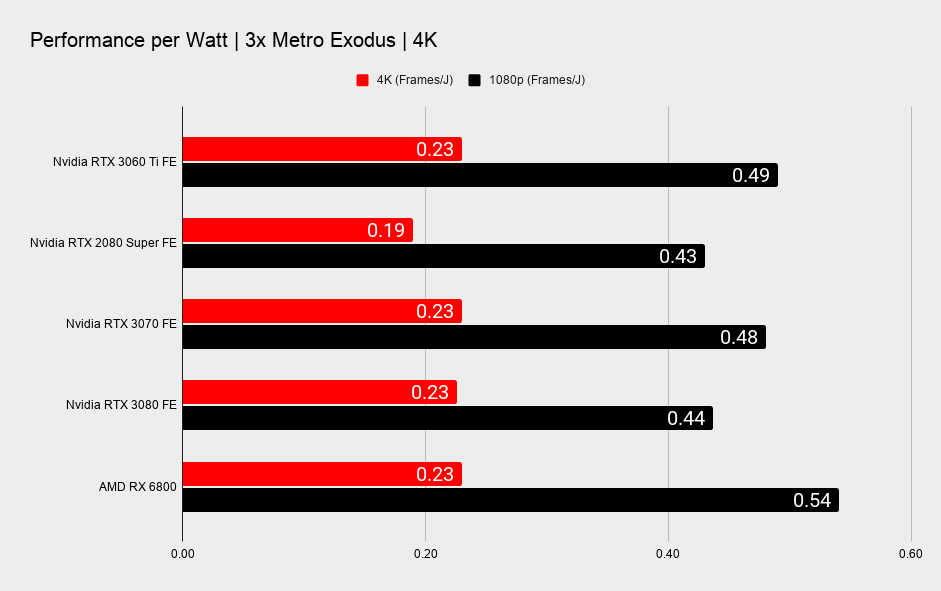
CPU - Intel Core i7 10700K
Motherboard - MSI MPG Z490 Gaming Carbon WiFi
RAM - Corsair Vengeance RGB Pro @ 3,200MHz
CPU cooler - Corsair H100i RGB Pro XT
PSU - NZXT 850W
Chassis - DimasTech Mini V2
There's not much about the RTX 3060 Ti that's particularly surprising, and the fact it's the most power efficient GPU of the RTX 30-series so far doesn't really change thing. With a 200W TDP, the RTX 3060 Ti occasionally sucks upwards of 232W from the PSU, but mostly maintains a steady gait at 200W or a little less.
That puts it ahead of the RTX 3070 by just a touch in performance per watt at 1080p, and in line with the rest of Ampere at 4K. That's notably off the performance per watt of AMD's RX 6800 and RDNA 2, which could give AMD a little more leeway when it comes to eventual RX 6700-series SKUs, should they show up anytime soon.
Verdict

Nvidia RTX 3060 Ti verdict
Once again we're looking at a solid generational leap from Nvidia's Ampere generation, and the RTX 3060 Ti delivers superb performance across a heady mix of rasterised and ray-traced games. If you're looking for a steady 60fps or more in the latest, most demanding games, then it's got you covered. If you want a little more more out of 1080p, you're sorted well into high refresh rate territory.
And if you hope for 60fps at 4K, that's attainable with only marginal sacrifices to graphics settings. Just what you might expect from an RTX 3060 Ti, no doubt.
Nvidia has also made significant gains in its mission to quash any and all frame rate sacrifice associated with true-to-life reflections and dynamic global lighting. There's undoubtedly still a performance hit from switching ray tracing on, but Nvidia's new and improved RT Cores, along with DLSS in many cases, takes some of the oomph out of the swing.
And that's an important thing to note as we head into PC gaming's third year of ray tracing (yes, it's been that long!). There's already a far more expansive library of ray tracing compatible titles than when Nvidia first launched the RTX suite back in 2018, and it's sure to only grow with AMD, and AMD-powered consoles from Sony and Microsoft, now supporting ray tracing acceleration on-chip.

Best CPU for gaming: the top chips from Intel and AMD
Best graphics card: your perfect pixel-pusher awaits
Best SSD for gaming: get into the game ahead of the rest
The same can be said for DLSS. The feature is become slightly more widespread in today's most played games, and it's becoming an especially useful tool for not only acting as counterweight to the ray tracing performance impact, but actually as a tool for reducing render load at high resolutions—a lot of the time on GPUs that materially don't have the guts to make it work.
The RTX 3060 Ti is such a card. While it dabbles in high-fidelity 4K gaming, some graphics settings need to be reduced in order to really crack a solid 60fps in more demanding games. And that's often just in terms of average framerates, to keep your GPU steadily above 60fps may require quite a bit of tinkering. That can sometimes take the fun out of 4K gaming in the first place, the supposed high level of detail.
So while DLSS is far from a universal solution, it's a surprisingly not all that lossy way to hit those all-important performance figures for smooth gaming. DLSS has come on leaps and bounds since its first introduction, and in most games it's not something that detracts from the visual or gaming experience in any tangible way.
And it's these extra features—ray tracing, DLSS, Reflex, and even Nvidia Broadcast—that generate quite a bit of my interest in the RTX 3060 Ti today beyond its rasterised performance. There's a solid base of genuinely great features behind RTX and the Nvidia package that's only been improved upon with Ampere, none more so than the ray tracing performance for that matter.
That's not to say AMD doesn't offer its fair share of alternatives in FidelityFX and Radeon Anti-Lag. But we're yet to see an AMD alternative to the supersampling feature, although one is confirmed to be on the way at some point next year in FidelityFX Super Resolution. And, while ray tracing is no longer an Nvidia-only experience with the introduction of the RX 6800-series, it is an area where the green team is dominating performance graphs.
The RTX 3060 Ti delivers superb performance across a heady mix of rasterised and ray-traced games
The same goes for a direct competitor to the RTX 3060 Ti—we don't know when it will arrive, but you can be sure that one will. Likely under the RX 6700-series banner.
And that's a common footing we find ourselves in with Nvidia's launches so far this generation—the company has materialised graphics cards ahead of AMD's comparative lineup, and that means that we won't truly know if AMD's got a trick up its sleeve to compete with the RTX 3060 Ti until likely early next year.
But that doesn't change a thing in my mind right now. It's not all Nvidia vs. AMD, you know, and frankly whether there's an answer to the RTX 3060 Ti in a few months or not, you shouldn't have any regrets in choosing this graphics card for your next big PC rebuild.
The RTX 3060 Ti delivers gaming performance that's rather stupendous when you look at generational gains over even the RTX 20-series—next to the 10-series it's quite frightening, actually. There's exceptional 1080p and 1440p performance in a tiny package here, the likes of which would've set you back something close to twice as much cash only last year. And that's pretty great.
There's just the small potential issue of availability, that which has similarly loomed over all the other RTX 30-series launches to date. I'm happy to be proven wrong, but judging by every tech launch this year (not only Nvidia's, and not only graphics cards), stock may be sparsely found for the RTX 3060 Ti at launch due to immense demand for new silicon right now.
Global availability for the RTX 3060 Ti begins December 2, 2020, and I suspect you'll want to be ready to go, front and centre, if you want to have any hope of picking up this graphics card on launch day, or likely anytime before 2021. And given the price and performance of this mid-range Ampere card, it will be worth getting in line for.
The RTX 3060 Ti is exactly what we expected from a fourth-tier RTX 30-series graphics card, but that's no mark against it. Nvidia's Ampere cards offers an almost unprecedented leap in gaming performance over past generations, and the RTX 3060 Ti manages to deliver more of the same on a slimmer budget.

Jacob earned his first byline writing for his own tech blog, before graduating into breaking things professionally at PCGamesN. Now he's managing editor of the hardware team at PC Gamer, and you'll usually find him testing the latest components or building a gaming PC.
